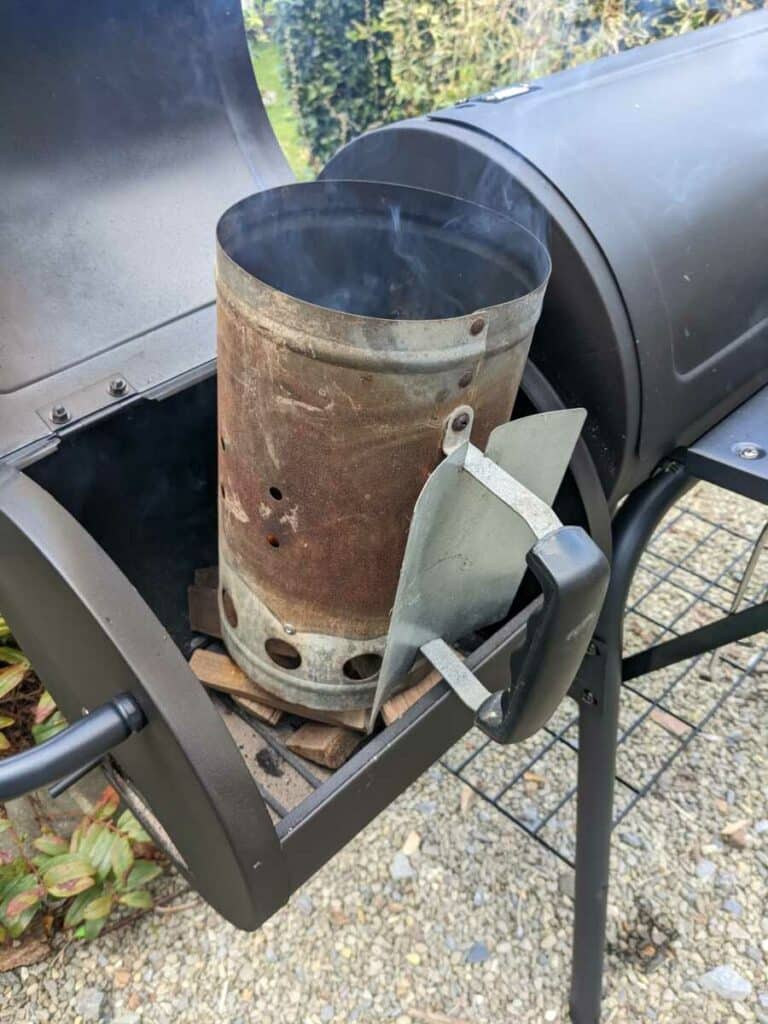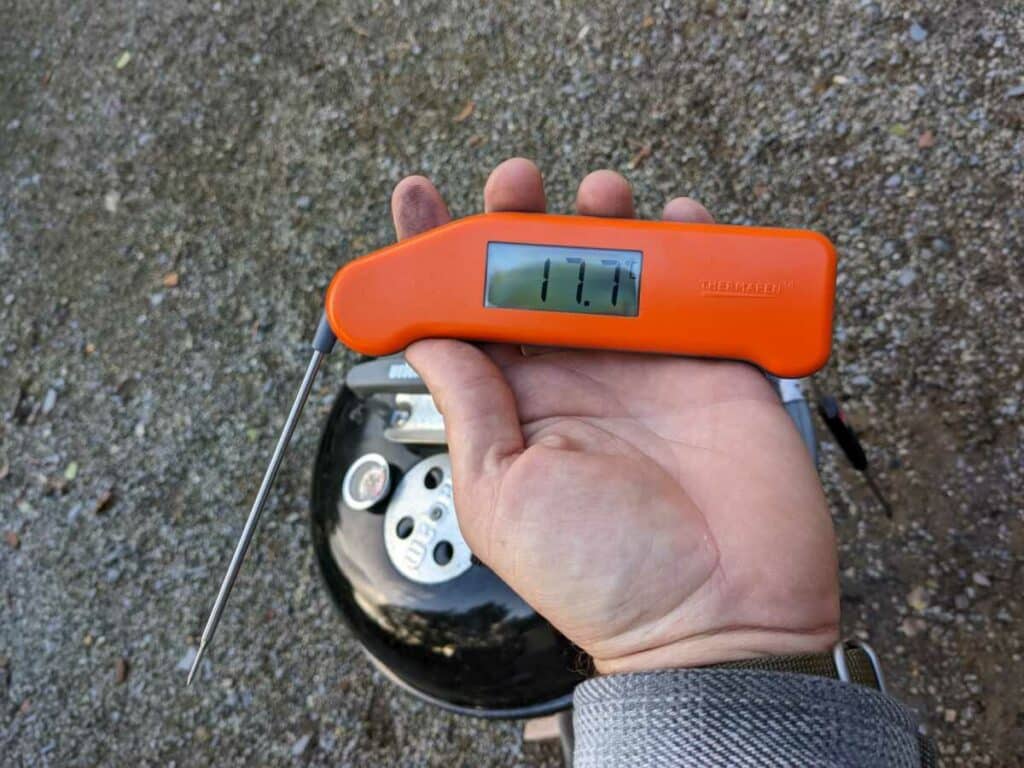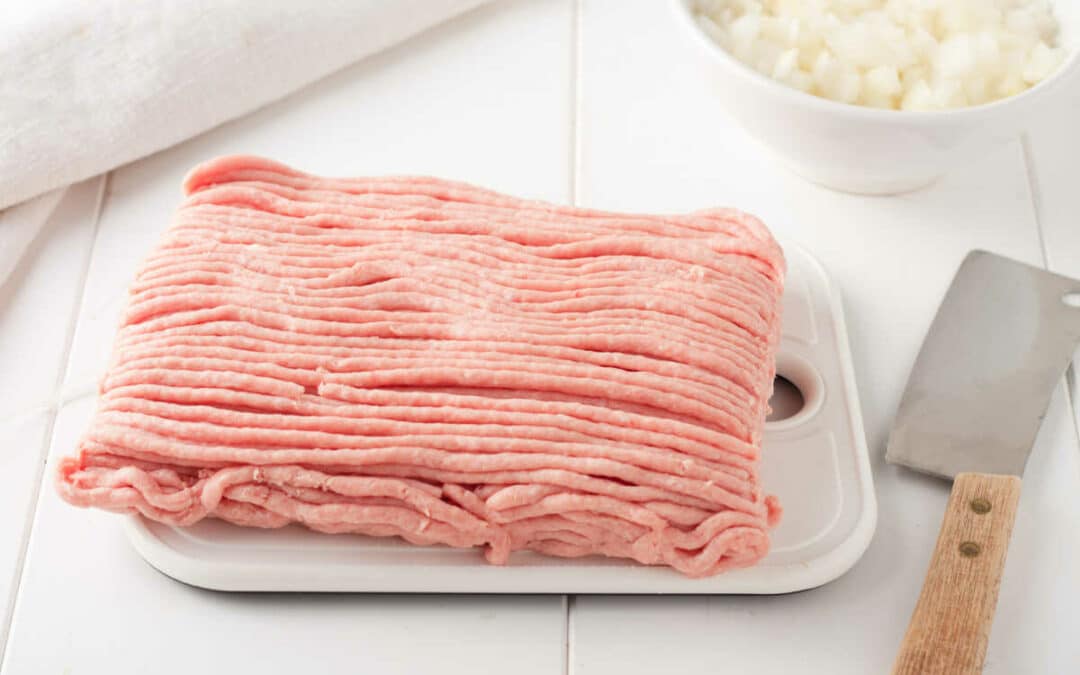Table of Contents
An offset smoker is considered the pinnacle of barbecuing. It has been the iconic smoker of barbecue competitions for years. But now the offset smoker design is widely available to all of us, to suit all budgets. DIY designs use 200-gallon barrels, or you can spend a little or a lot on smokers at hardware or BBQ-specific stores.
Using an offset smoker is pretty simple. You get a good heat going with a charcoal base and supply it with logs regularly, roughly every 45 to 60 minutes. Keep an eye on the heat in the grilling barrel. Depending on the cut of meat, aim for 250-350 degrees Fahrenheit. In a nutshell, that is as simple as it gets.
Now let us explore this a little further and go through the dos and don’ts and the tips and tricks learnt through many years of smoking meat.
How Does an Offset Smoker Work?
An offset smoker is a simple design that uses a separate chamber to hold the fire that creates the heat with an opening that directs this heat into the main cooking chamber.
The designs vary; they can be on the side, underneath, and sometimes at the back. But most often, they are on the side of the main cooking chamber.
By having a separate fire chamber, you can control the heat without interrupting the cooking process. You can also add wood to create smoke that helps flavor the meat.
To control the heat, there are vents on the firebox and there is usually a chimney on the cooking chamber’s far side. Now you know the basics. Let’s get smoking.
Parts of A Firesmoker

Building and maintaining a fire
Now the fun begins. It’s vital to ensure you have some quality charcoal, lump or briquettes, and some kiln-dried wood. Let’s get this fire started:
- I like to start the fire started using a charcoal chimney and a firefighter. Get the coals nice and hot with a good layer of grey ash.
- If you don’t have a charcoal chimney (get one!) then build a charcoal fire on the firebox grill. The more charcoal you get hot, the better.
- I keep the charcoal on the far side of the firebox. Stop burning yourself; safety first:)
- Place a couple of dry pieces of wood in the firebox on the near side to warm up. If you get them warm, they will ignite quicker when you place them on the charcoal.
- You don’t want your wood to be too big, I make sure they are no bigger than my fist diameter and split.
- Get the firebox up to temperature by placing the logs on the charcoal base.
- Keep stoking the side of your firebox with fresh wood so it warms up and will catch fire much quicker.
- Keep an eye on your cooking chamber temperature.

Getting the temperature right
This bit can be tricky and is much easier if you have a calibrated smoker thermometer. But this is unlikely, so it’s best to get a smoker’s thermometer.
Most smoking is done around 225-250 Fahrenheit. An external grill temperature gauge is useful to get this temperature set correctly. If you don’t have one on your smoke chamber, then you can install an aftermarket one like this. I added one like this to my weber kettle and it works perfectly.

Once you have the smoke chamber temperature up to heat, you want to be able to slowly feed the firebox to keep it hot. Check it at least every 45 minutes and be ready to place another log on the charcoal.
Let’s look at a simple list to follow:
- Get to the desired smoke chamber temperature. Use the vents to regulate the heat. Open vents make it hotter; closed vents make it cooler.
- Keep checking the temperature and making small adjustments to the vents as you cook. Outside elements such as wind and rain can affect the internal temperature.
- I usually check every 45 minutes, check the fire and place another log to heat it up.
- Just like a grill, keep the bed of ash to a minimum and tap it so the loose ash falls through the grill.
- Check the smoke coming out of the chimney. If it’s white, you may have problems. Open the firebox to get the wood burning hot again this should reduce the smoke.
- If the temperature drops significantly and you have a log on the fire, you need more air, so open the vents or open the door.
- There can be a difference of 50F in the smoker chamber from one end to the other. Make sure you rotate and turn your meat regularly.
- Do not let the fire go out and keep checking regularly.
Smoker fire safety
The smoker is not as hot as using a direct grilling method, but it still gets hot and you want to be careful where you place the smoker. Consider how close you are to buildings, trees, decking, or other flammable surfaces or objects.
Use kiln dried wood and only use natural wood, don’t use any construction lumber or plywood as these have preservatives and glue inside that can be quite dangerous.
Do not inhale the smoke coming from the smoker. We love the taste that it can provide, but remember that it can harm you if you inhale it.
Tips and tricks for offset smokers
Use kiln-dried wood:
Kiln-dried wood has moisture removed so it burns evenly and releases less moisture, which in turn reduces the amount of thick smoke. When it comes to smoking meat, you don’t want to overpower the flavor of the meat with too much smoke, and kiln-dried wood is the best way to control this.
Pre-heat the cooker:
Make sure you have the smoke chamber and your firebox working at their optimal temperature before you add the meat. You don’t want to add it too early and have unevenly cooked meat.
Get a good thermometer:
It’s really vital to get good temperature readings so you can tell what’s happening at all times. If your smoker chamber does not have one, then you can install an aftermarket one. I recommend getting two, one for each end, as the temperature can vary up to 50F at each end. I recommend using a thermapen.

Make small adjustments.
Keep the smoke chamber lid closed as much as possible. You want to keep the temperature as well maintained as possible. You have to check, but keep it to a minimum.
Keep the vent adjustments to a minimum. I really avoid big adjustments as I don’t want to create huge variations in the temperature. I generally just use the firebox vent and keep the chimney just over half open. never fully closed.
Rotate the meat.
Keep the meat moving. I’m aware I’ve said this after telling you to not open the smoke chamber as much as possible. It is a fine balancing act, like much of cooking. You’ll get a feel for it.
Use a water pan.
One thing we haven’t discussed much is using a water pan. Putting a water pan in the smoker can help retain moisture in the meat and control the temperature. I will write more about using a water pan, but consider using one in the firebox so you don’t have to keep opening the smoke chamber.






0 Comments